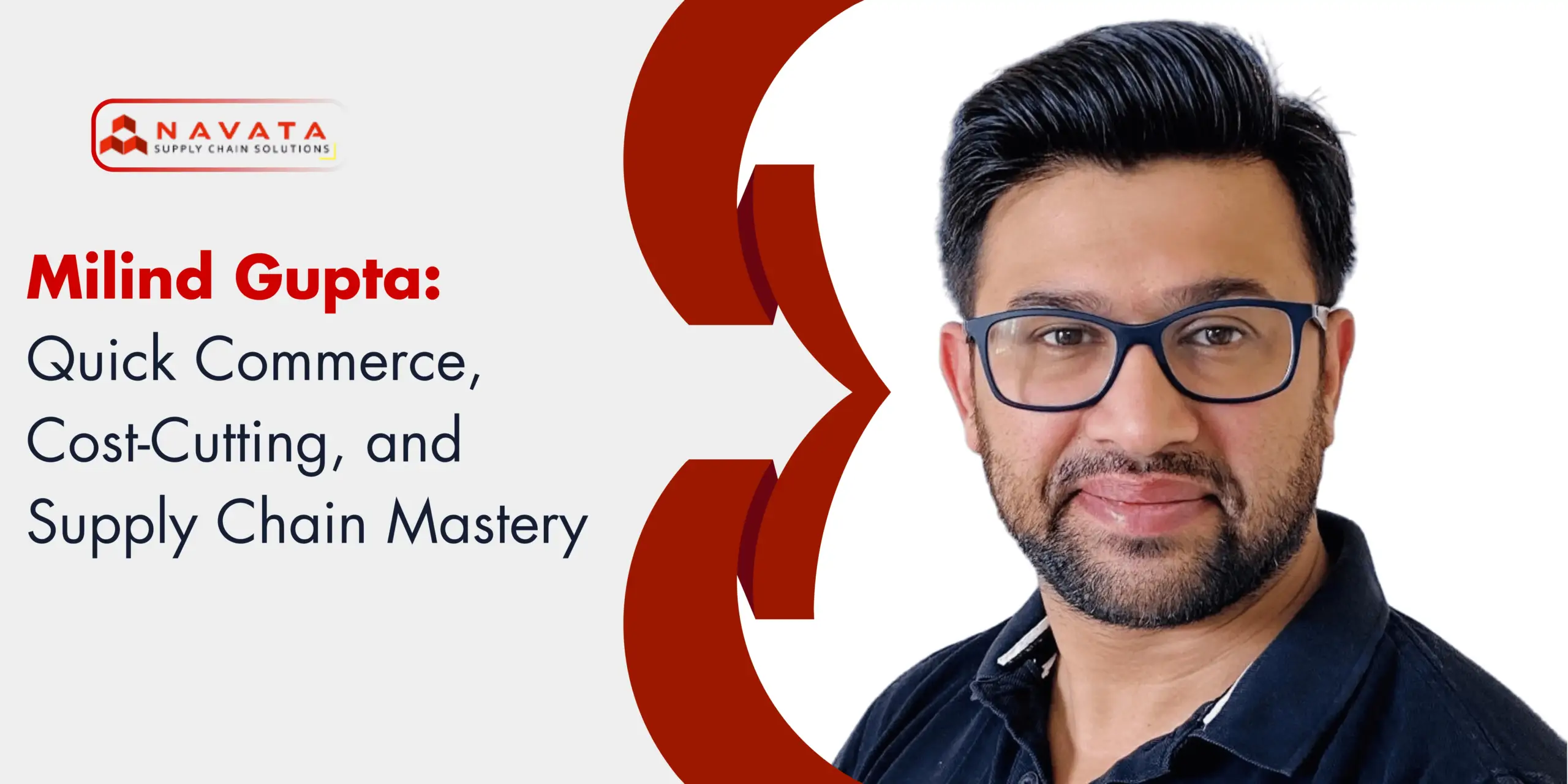Meet Milind Gupta, the Vice President of Supply Chain and Procurement at Open Secret, a fast-growing F&B brand. With over 14 years of experience in the industry, Milind has worked across various facets of logistics, including warehouse management, cross-border logistics, and last-mile delivery optimization. His extensive expertise and hands-on approach have made him a key player in shaping efficient and innovative supply chain strategies.
In this conversation, Milind delves into the intricacies of delivering for quick commerce, designing customized Warehouse Management Systems (WMS), and optimizing last-mile delivery. He also shares his passion for logistics and reflects on what it means to be a logistics professional in today’s dynamic and ever-evolving landscape.
What sparked your journey into the world of supply chain, and what keeps you motivated to stay in it?
“I am an engineer by profession, and when I first started in supply chain, I didn’t know much about it. But I was amazed by the work being done. I worked in logistics network planning, cross-border logistics, and warehouse management, and honestly, I had a lot of fun.
Then, I pursued my post-graduation in supply chain management, which was a game changer for me. During my studies, I went deep into supply chain and gained a fresh perspective. I got to interact with people from marketing and sales and realized how supply chain acts as the central nucleus, needing to work seamlessly with other departments to drive success.”
“Supply chain is incredibly exciting because it’s constantly evolving. And here’s the thing—the future isn’t just about an idea, marketing, or sales. The future is supply chain. You could have the same idea and the same marketing strategy, but at the end of the day, customer satisfaction hinges on supply chain excellence. The way you optimize your supply chain directly impacts the product’s pricing point and overall value to the customer. That’s why it’s the driving force behind every successful business.”
“The future is supply chain. You could have the same idea and the same marketing strategy, but at the end of the day, customer satisfaction hinges on supply chain excellence. The way you optimize your supply chain directly impacts the product’s pricing point and overall value to the customer. That’s why it’s the driving force behind every successful business.”
At Open Secret, you’re catering to quick commerce, a new form of trade. What challenges does quick commerce bring to the table?
Quick commerce is highly involving and holds immense potential for revenue. It primarily operates out of dark stores—small warehouses that serve a 3km radius. These spaces are compact, and the inventory capacity is limited, which creates intense competition for shelf space. Timely delivery is absolutely critical because if you fail to deliver, there are countless brands waiting to take your spot, and regaining that space becomes a significant challenge. It’s a demanding process, but it certainly keeps us on our toes.
“In quick commerce, timely delivery is absolutely critical because if you fail to deliver, there are countless brands waiting to take your spot, and regaining that space becomes a significant challenge.”
You’ve set up customized warehouses in multiple roles throughout your career. What are the key factors to consider when implementing a Warehouse Management System (WMS)?
The first step in implementing a Warehouse Management System (WMS) is understanding the specific problem it needs to solve, as this varies greatly across industries. For instance, in the pharmaceutical industry, tracking the expiry dates of inventory is crucial, while in the apparel industry, managing stock levels across different sizes of a product is a key requirement.
Additionally, the WMS should accurately reflect the physical layout of the warehouse. For example, if your warehouse has three distinct zones, the system should mirror this setup. It should also account for the various hierarchies within the warehouse.
So, ultimately, it’s about thoroughly understanding the physical workflows in the warehouse and determining the critical data points to capture and report.
You’ve worked extensively in last-mile optimization, and during your time at OLED Milk Basket, you developed a last-mile strategy that reduced their logistics costs by 30%. Can you share the approach and key steps you took to achieve this?
In last-mile delivery, the first step is creating an extensive route map of the city, focusing on areas with a high volume of orders. This helps streamline delivery routes and minimize inefficiencies.
Next comes order clubbing, which involves grouping orders that need to move from a specific point A (the warehouse) to a nearby delivery point B. Properly clubbing orders ensures better route optimization and reduces redundant trips.
It’s also essential to analyze the type and volume of the load being delivered, as well as the time frame required for each delivery. Based on this data, you choose the appropriate vehicles, whether it’s a bike for smaller deliveries, a Tata 407 for mid-sized loads, or a Bolero for larger shipments.
Additionally, establishing flexible contracts with vehicle vendors is critical. This involves deciding whether to rent vehicles for a part of the day or lease them on a monthly basis, and then negotiating contracts that are beneficial for both parties.
What is your advice to operational managers?
Operation Manager should not restrict themselves to just fulfilling orders. They should take the time to understand every small part of the business that is effecting supply chain. At the end of the day, supply chain is a cost incurred by the company, and the success of operational managers lies in reducing this cost effectively.
Moreover, operational managers should avoid working in silos. They need to collaborate closely with other departments, particularly the finance team, to understand the various supply chain costs involved. They then need to work towards reducing them—whether it’s the transportation, warehousing, or packaging costs.
“Operation Manager should not restrict themselves to just fulfilling orders. They should take the time to understand every small part of the business that is effecting supply chain. At the end of the day, supply chain is a cost incurred by the company, and the success of Operation Manager lies in reducing this cost effectively.”




1 Comment
Rakesh Kumar
Iam interested job in navata